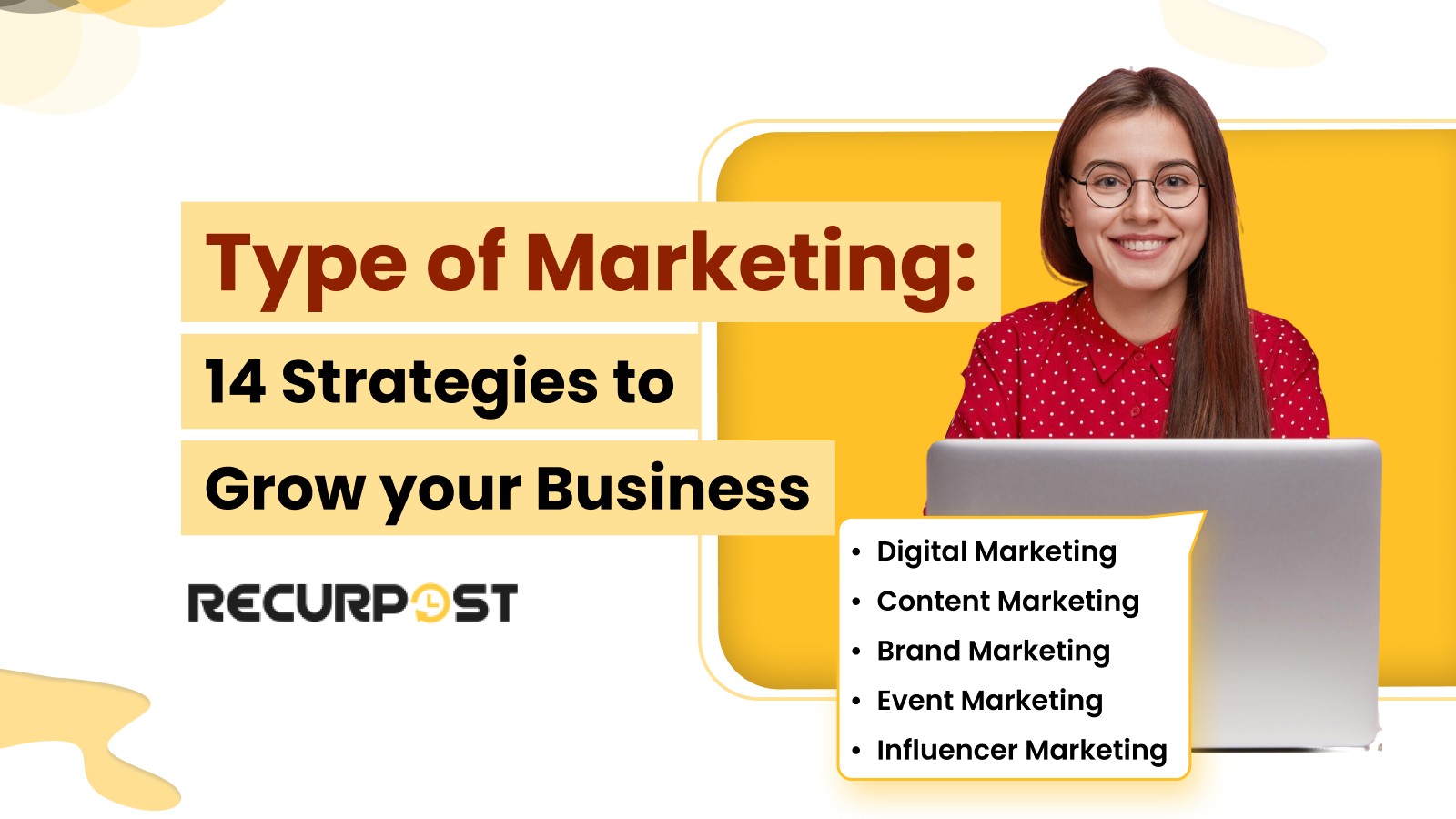Marketing evolved from simply promoting products or services to creating, communicating, and delivering value to customers for building long-term relationships. This shift represents a modern marketing strategy.
“People do not buy goods and services. They buy relations, stories, and magic.” — Seth Godin.
TL;DR
- SEO (Search Engine Optimization): Improves organic visibility and credibility in search results
- Content Marketing: Uses blogs, videos, infographics to inform, build trust, and drive engagement
- PPC (Pay‑Per‑Click) Advertising: Runs targeted paid ads (Google, social media) for fast lead generation and conversion
- Social Media Marketing: Leverages platforms like Facebook, Instagram, LinkedIn to boost brand awareness, engagement, and traffic
- Email Marketing: Sends segmented and personalized emails to nurture relationships and drive customer value
What Is Marketing?
Marketing connects products with consumers by making offerings visible. Products won’t sell without awareness. Marketing resembles storytelling, crafting narratives that resonate with potential customers while evolving through technologies and creative strategies.
Marketing strategy concepts date back to ancient times, with modern marketing undergoing a paradigm shift. The industry has evolved rapidly since the Industrial Revolution, branching into many different types of marketing.
Types of Marketing
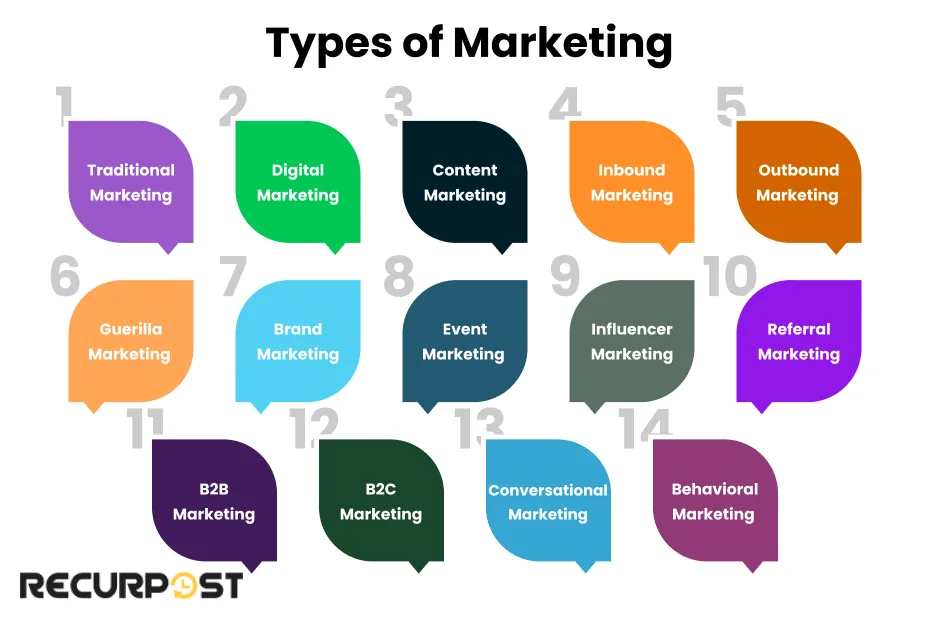
Businesses select marketing strategies aligned with their goals, audience, and budget by understanding each marketing type. Marketing strategies divide into traditional marketing and digital/user-generated marketing.
This article covers 14 types of marketing strategies businesses use to grow their brand. While most marketers focus on the main 7—Traditional, Digital, Content, Inbound, Outbound, Brand, and Social Media, we include more specialized strategies. The core types are Traditional, Digital, Content, Inbound, and Outbound Marketing.
1. Traditional Marketing
Traditional marketing promotes brands through conventional channels. Companies market goods to customers via newspapers, TV, radio, direct mail, telemarketing, billboards, posters, and similar media.
These marketing channels still play a significant role for some brands.
Types of Traditional Marketing Strategies:
1.1. Print Marketing Strategy
Print marketing uses replicated printed content that gains business attention at local or national levels.
Companies promote services in local communities cost-effectively through newspapers, magazines, pamphlets, and other print media.
1.2. Broadcast Marketing Strategy
Broadcast marketing conveys information through visual or auditory electronic media, capturing viewer attention.
Broadcast commercials target audiences with specific interests through television, radio, silver screens, and other electronic media.
1.3. Outdoor Marketing Strategy
Outdoor marketing displays advertisements in public spaces outside homes, relying on visibility within public domains.
This includes billboards, printed advertisements on benches, sticker wraps on vehicles, advertisements on public transit, etc.
2. Digital Marketing
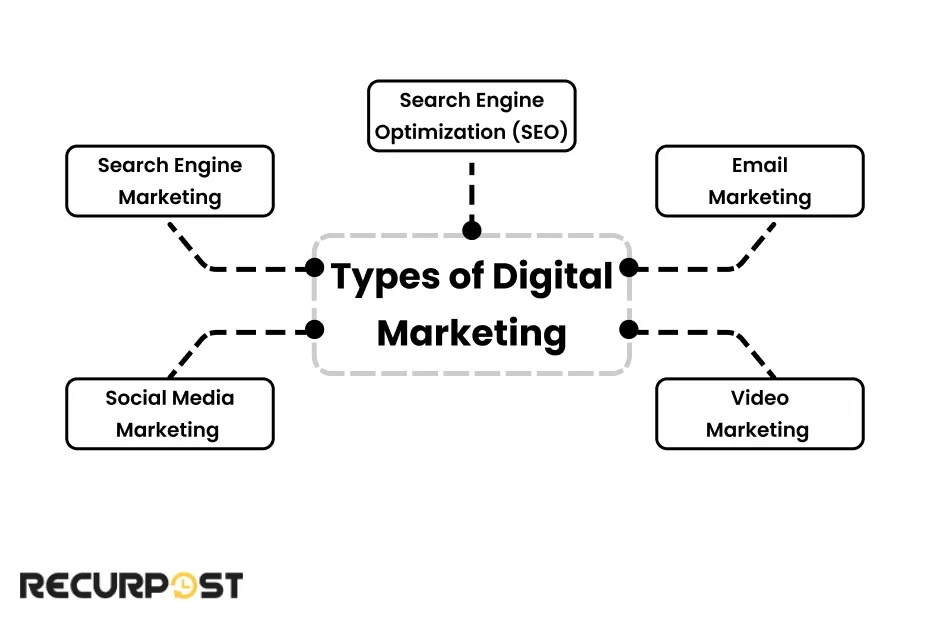
Digital marketing promotes brands through digital media and technology. The American Marketing Association (AMA) defines digital marketing as reaching customers where they spend time online.
Digital marketing connects with customers through online channels, including social media platforms, search engines, email, and websites. Several digital marketing strategies exist within this category.
Types of Digital Marketing Strategies:
2.1. Social Media Marketing
Social media marketing builds online presence on platforms where brands connect personally with consumers while promoting services.
Social media channels allow businesses to amplify their voice, reach new audiences, and build brand communities cost-effectively while expanding their presence.
To maximize the impact of social media marketing, many companies choose to Outsource Social Media Marketing to professionals, ensuring optimized results with minimal time investment.
This valuable marketing strategy involves promoting your brand via social media platforms, such as Facebook, Instagram, Twitter, Pinterest, LinkedIn, or YouTube, for promoting social media ads and Google ads.
2.2. Search Engine Marketing
Search Engine Marketing uses search engines to display business and social media pages. The goal make pages appear on Search Engine Result Pages (SERPs).
Search engine marketing curates website landing pages to display user-generated content and is divided into Search Engine Optimization and Pay-per-click Advertising.
2.3. Search Engine Optimization (SEO)
Search Engine Optimization (SEO) improves website visibility on search engine results pages, attracting organic, non-paid traffic.
SEO leverages internet traffic patterns, targeted campaigns, and keywords to increase company reach through search engines.
2.4. Email Marketing
Email marketing delivers business communications to consumers’ inboxes in a cost-effective and personalized manner.
Businesses can segment their email list to tailor messages to specific segments of their audience. Through these targeted emails, small businesses can promote products, share news, and build a community through inbound marketing.
Email marketing platforms also allow marketers to track and analyze the success of each email, which offers insights into your audience’s preferences.
2.5. Video Marketing
Video marketing incorporates videos into marketing assets, displaying brands while providing space to convey messages.
Many marketers prefer to include video marketing as part of their marketing strategy for a higher return on investment. There are several social media video tools in video marketing to improve marketing efforts.
3. Content Marketing
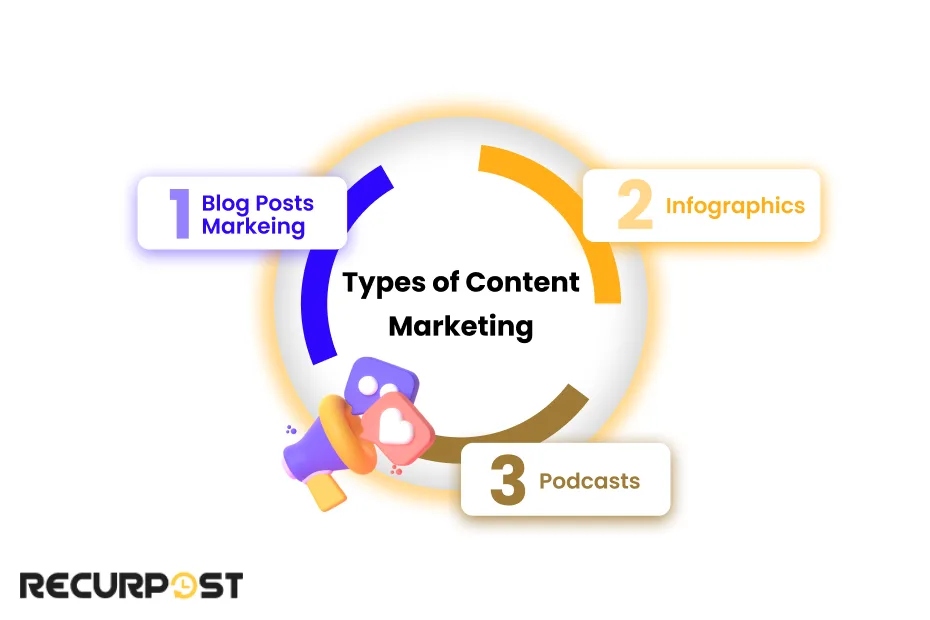
Content marketing creates Blog Posts, White Papers, Case Studies, E-books, Infographics, and Webinars, building customer relationships through valuable content, driving profitable customer action.
The companies use this as a marketing tactic to create a product, share information about a product, obtain customer information, and encourage customers to continue with the company beyond the content.
Digital Marketing Campaign Template
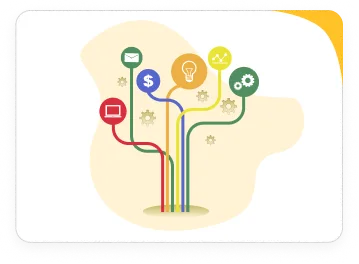
Types of Content Marketing Strategies:
3.1. Blog Posts Marketing
Blog Posts Marketing uses written content to educate and inform while improving SEO scores. Regular blogs build authority, drive organic website traffic, and address audience needs through tailored content.
Various Social media management companies, construction companies, and digital marketing agencies use this as a marketing effort to do market research. Some examples are RecurPost, etc.
3.2. Infographics
Infographics present data and statistics visually in a digestible format. These visuals combine text, images, charts, and diagrams, conveying messages quickly.
- E-books and White Papers- It refers to the long-form content marketing tool used to provide in-depth information on any specific topic, often used in B2B companies.
- E-books are digital books designed to offer valuable, comprehensive information. It typically ranges from 10-50 pages. It is used to provide solutions to problems and deep insights on specific topics.
- White Papers are more formal and research-driven documents that provide companies with detailed information for analysis, solutions, and decision-making.
3.3. Podcasts
Podcasting is a new marketing tool used in content marketing that lets small businesses talk directly to their target audience. Podcasts can help nurture customer relationships by creating a personal connection with listeners.
When done properly, this in turn can help supplement a brand’s content strategy by driving increased website visits, lead generation, and conversions. Have a look at this:
4. Inbound Marketing
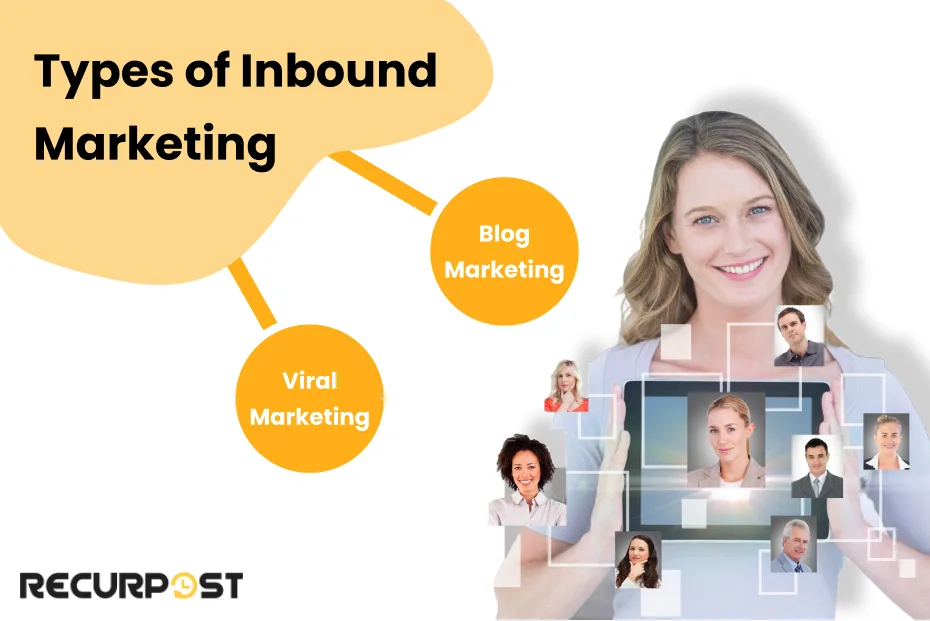
Inbound marketing serves as an umbrella term for multiple marketing types. Inbound marketing focuses on consumers’ requirements, directing resources toward encouraging customers rather than disrupting them.
The basic foundation of inbound marketing is based on attracting, engaging, and satisfying the audience. The inbound marketing funnel includes Blog Marketing, Viral Marketing, and others.
4.1. Blog Marketing
Blog Marketing promotes businesses, brands, products, or services through blogs to build customer bases and drive traffic for broader marketing campaigns.
The target audience of this type of marketing can be marketing professionals, management companies, etc.
4.2. Viral Marketing
Viral Marketing encourages rapid message sharing to achieve exponential business growth online or offline.
The message must be engaging, entertaining, or emotional. This could be in the form of videos, memes, or social media posts. Platforms like Facebook & Instagram play a vital role in this marketing effort.
5. Outbound Marketing
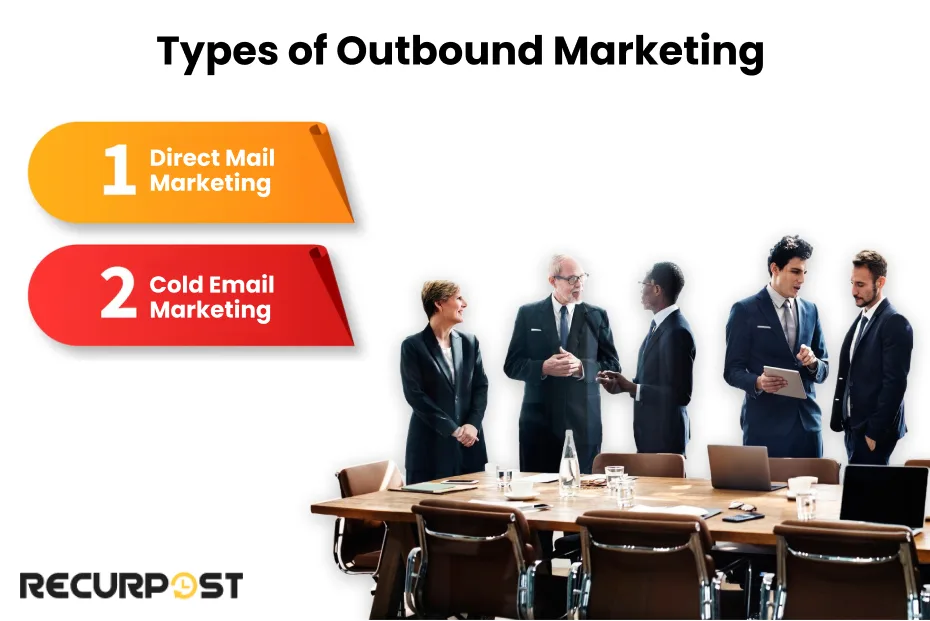
Outbound Marketing pursues prospective customers rather than attracting them organically, building awareness driving conversions.
In this type of outbound marketing, the most effective marketing strategies are direct mail marketing and cold emailing.
5.1. Direct Mail Marketing
This is a type of outbound marketing that involves sending physical materials, in postcards, catalogs, letters, and brochures, to a target audience based on demographics and purchase history. These are curated as personalized for the target audience so that it has a higher response rate. Direct mail is a slower service and can take weeks or days to reach potential customers.
5.2. Cold Email Marketing
It is a type of outbound marketing emphasizing making the first move, which involves sending unsolicited emails to new customers to promote a product or service. The steps involved in this type of marketing are to identify your target audience, such as company size, job title, etc.
In this type of outbound marketing campaign, digital agencies or any other company can create engaging content for their new and potential customers by mentioning them personally to increase brand awareness.
6. Guerrilla Marketing

Guerrilla Marketing promotes products through innovative, low-cost tactics, generating profits. Creative marketing materials help brands stand out in crowded marketplaces.
These are designed to catch the public’s attention, creating a buzz and encouraging word-of-mouth promotion. Jay Conrad Levinson coined the term in his 1983 book called Guerrilla Marketing.
The following are the types of marketing strategies in Guerrilla marketing.
6.1. Flash Mobs
This is a type of marketing strategy that involves spontaneous gatherings of people who come together in a public space to perform a predetermined action for entertainment or to promote a message. These events are usually for a short duration and are often organized through social media marketing strategies using Instagram, Facebook, etc.
6.2. Stealth Marketing
It is a type of marketing that uses a covert approach to promote a product or brand. These are not immediately recognized as advertisements, they aim to engage customers without them knowing that they are being marketed. Stealth Marketing uses mouth marketing strategies to create a buzz amongst prospective consumers.

7. Brand Marketing
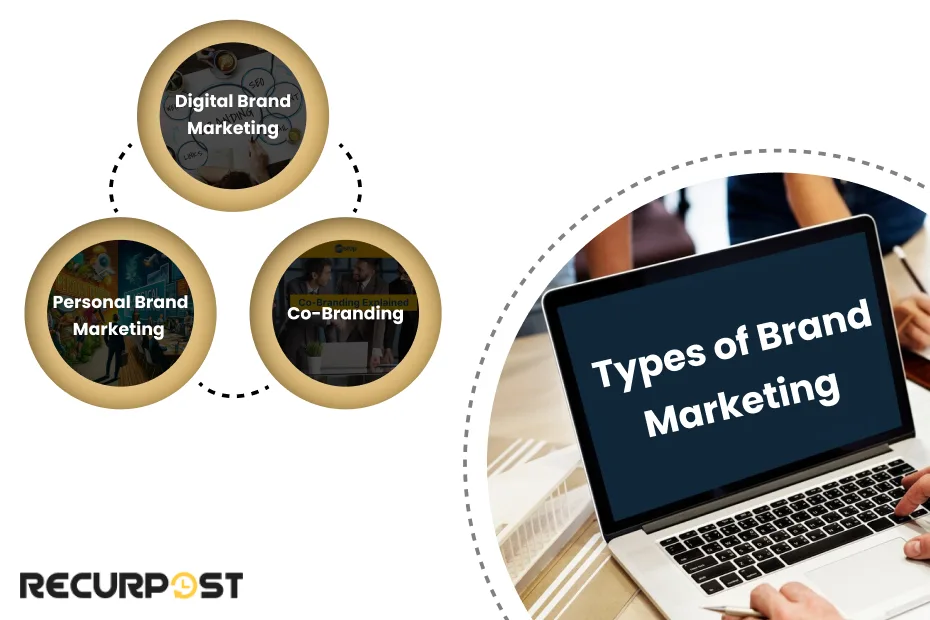
Brand Marketing builds and promotes brands, creating loyalty and trust among target audiences. This strategy builds brand equity, boosts awareness, and establishes market positions through Digital Brand Marketing, Co-Branding, and Personal Branding.
7.1. Digital Brand Marketing
This involves the use of digital marketing channels such as social media, websites, and search engines to build a brand’s online presence. It includes digital advertising, influencer marketing, and content marketing.
7.2. Personal Brand Marketing
This strategy is used by individuals (influencers, celebrities) to create a unique personal identity that resonates with their audience. It often uses the person’s expertise, values, and personality to build a loyal following.
7.3. Co-Branding
This strategy involves collaborations between two or more brands to create a combined product or experience that is beneficial to both. The aim is to reach new potential customers.
8. Event Marketing
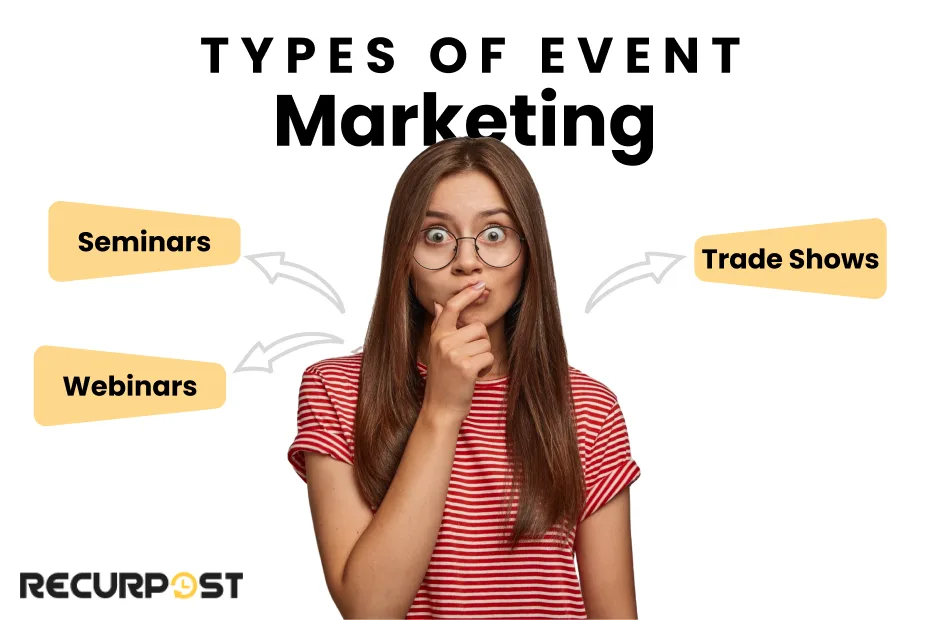
Event Marketing creates or sponsors events engaging target audiences. Brands build awareness, generate leads, and foster customer relationships through conferences, webinars, and trade shows.
8.1. Seminars
This is a smaller and more focused form of event marketing aimed at educating participants on a particular topic and skill.
8.2. Webinars
This is a virtual version of seminars where the topic is presented virtually, allowing a wide range of participation from anywhere and everywhere. Both of these are types of event marketing, which is popular for reaching a specific niche of the target audience.
8.3. Trade Shows
This is a way to network with people and business professionals, where businesses showcase their products or services to other people or businesses. This type of event marketing is popular for generating leads and getting business.
9. Influencer Marketing
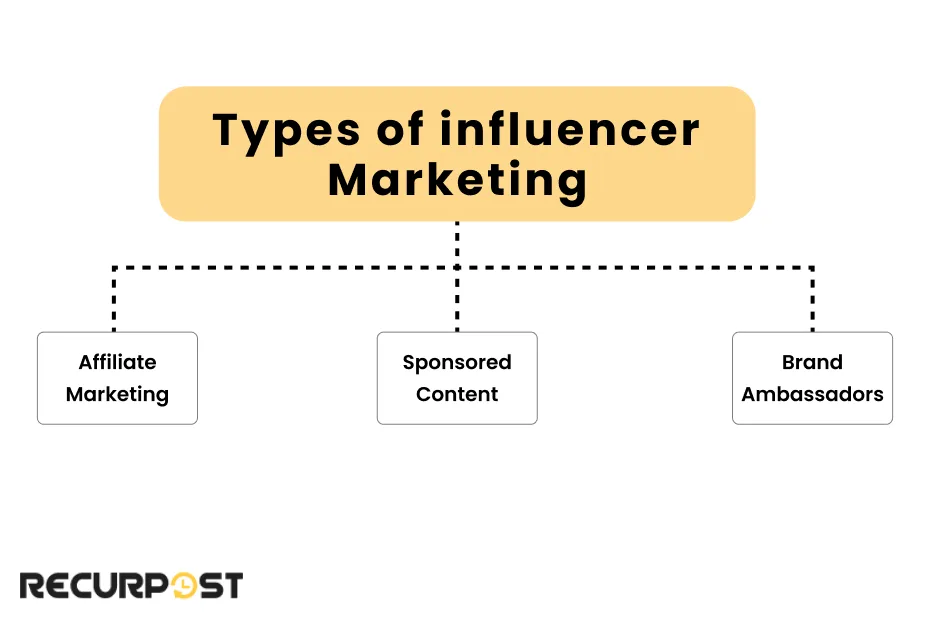
Influencer Marketing leverages niche experts promoting company products to audiences through Affiliate Marketing, Sponsored Content, and Brand Ambassador programs.
9.1. Affiliate Marketing
It is performance-based marketing where the affiliates earn a commission for generating traffic or sales through their influence. It is a more effective type of marketing for social media users. Here, both the parties involved are at benefit, the affiliates (influencers) and the merchants (businesses).
9.2. Sponsored Content
It is a form of influencer marketing tactic in which brands pay influencers to promote their products on their posts, stories, reels, or videos to influence their target audience. This is a great form of paid advertising to maximize the reach of the company’s target audience.
9.3. Brand Ambassadors
It is a form of influencer marketing where there is a long-term partnership between influencers and brands, where the influencers promote the brands for an extended duration. This type of marketing campaign is popular in recent times.
10. Referral Marketing
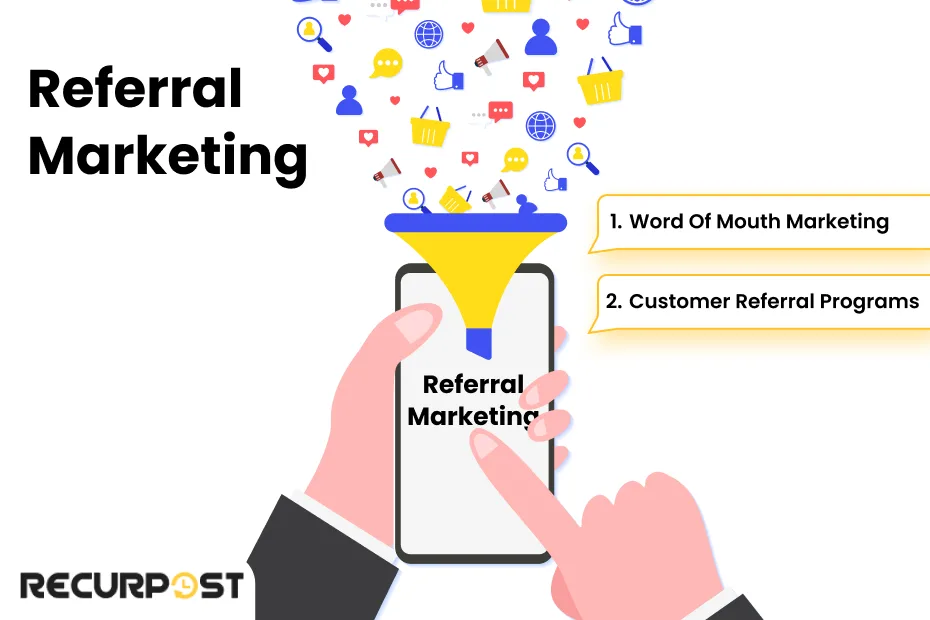
Referral Marketing encourages existing customers to recommend products or services to others. This strategy acquires new customers by leveraging trust between family, friends, and colleagues through word-of-mouth marketing and loyalty programs.
10.1. Word of Mouth Marketing
It is a promotional strategy method that is dependent on existing customers’ experiences, opinions, and recommendations to attract new customers. It is a natural way of marketing because of the involvement of factors like trust that influence the purchasing decisions of new customers. Some of the different types of word-of-mouth marketing include buzz marketing, organic marketing, etc.
10.2. Customer Referral Programs
These programs recognize existing customers for referring new customers. This form of marketing skill has been very famous in history and is still trending in the present. Recognition includes cash bonuses, discounts, and loyalty points.
11. B2B Marketing

B2B Marketing sells products or services to other businesses rather than to consumers. Marketing professionals target small businesses and corporations through lead-based marketing and account-based marketing approaches.
12. B2C Marketing
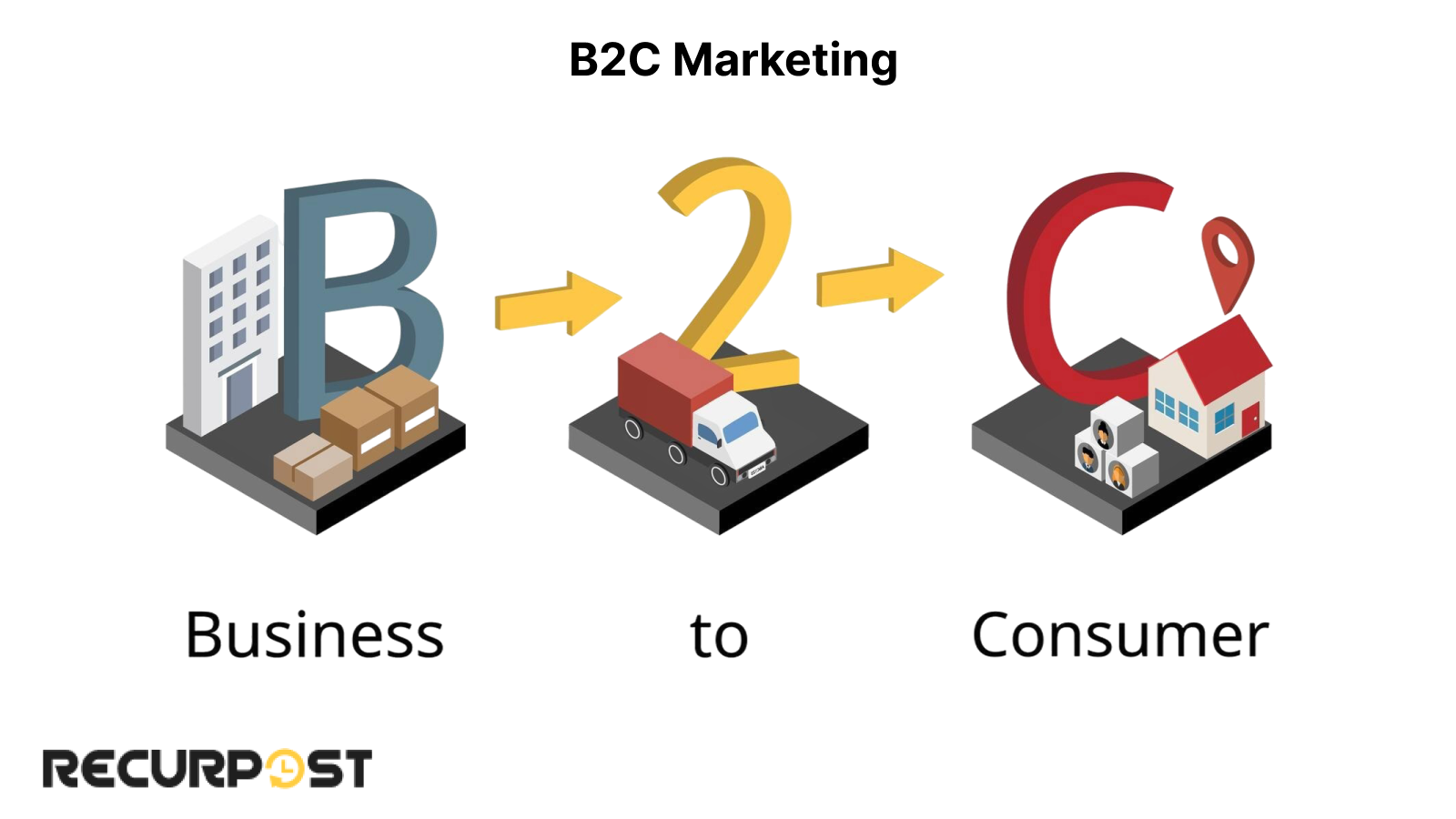
B2C Marketing sells products or services directly to consumers. Marketing teams analyze consumer needs, preferences, and behaviors to create targeted content.
The marketing teams collect data using social media channels through polls, Q&A, surveys, questionnaires, etc.
13. Conversational Marketing
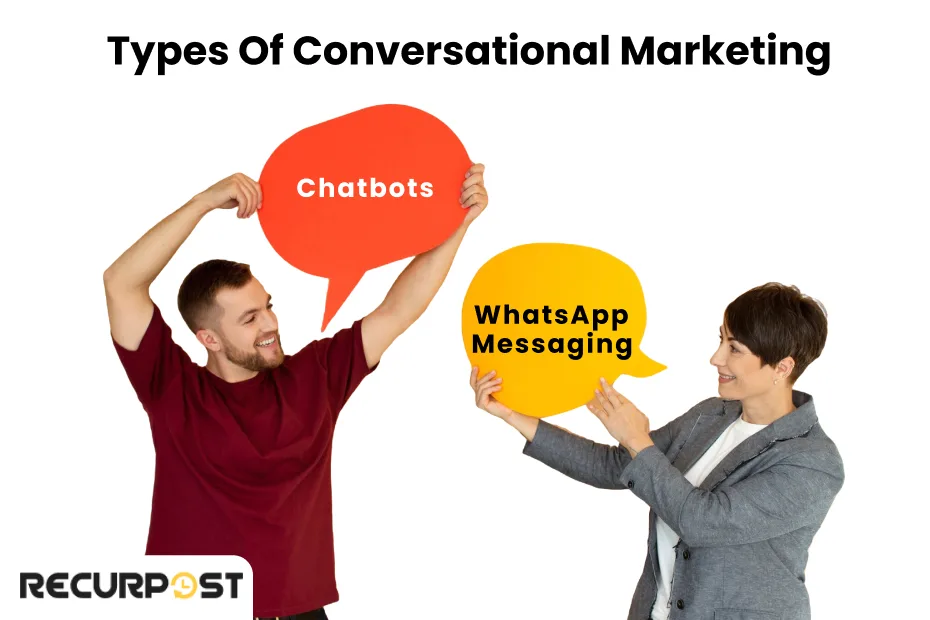
Conversational Marketing builds customer relationships through real-time interactions. This customer-centric approach creates personalized experiences using chatbots and WhatsApp messaging.
13.1. Chatbots
These are marketing automation systems that use artificial intelligence to chat with customers. They can handle basic questions, collect information, and guide customers.
13.2. WhatsApp Messaging
This refers to using a social media messaging platform to promote products and services or converse with customers. It allows businesses to send messages in bulk to multiple contacts with its Broadcast Lists feature. It is a two-way communication application that allows seamless conversations between businesses and their customers. This is the most commonly used social media channel for interaction.
14. Behavioral Marketing
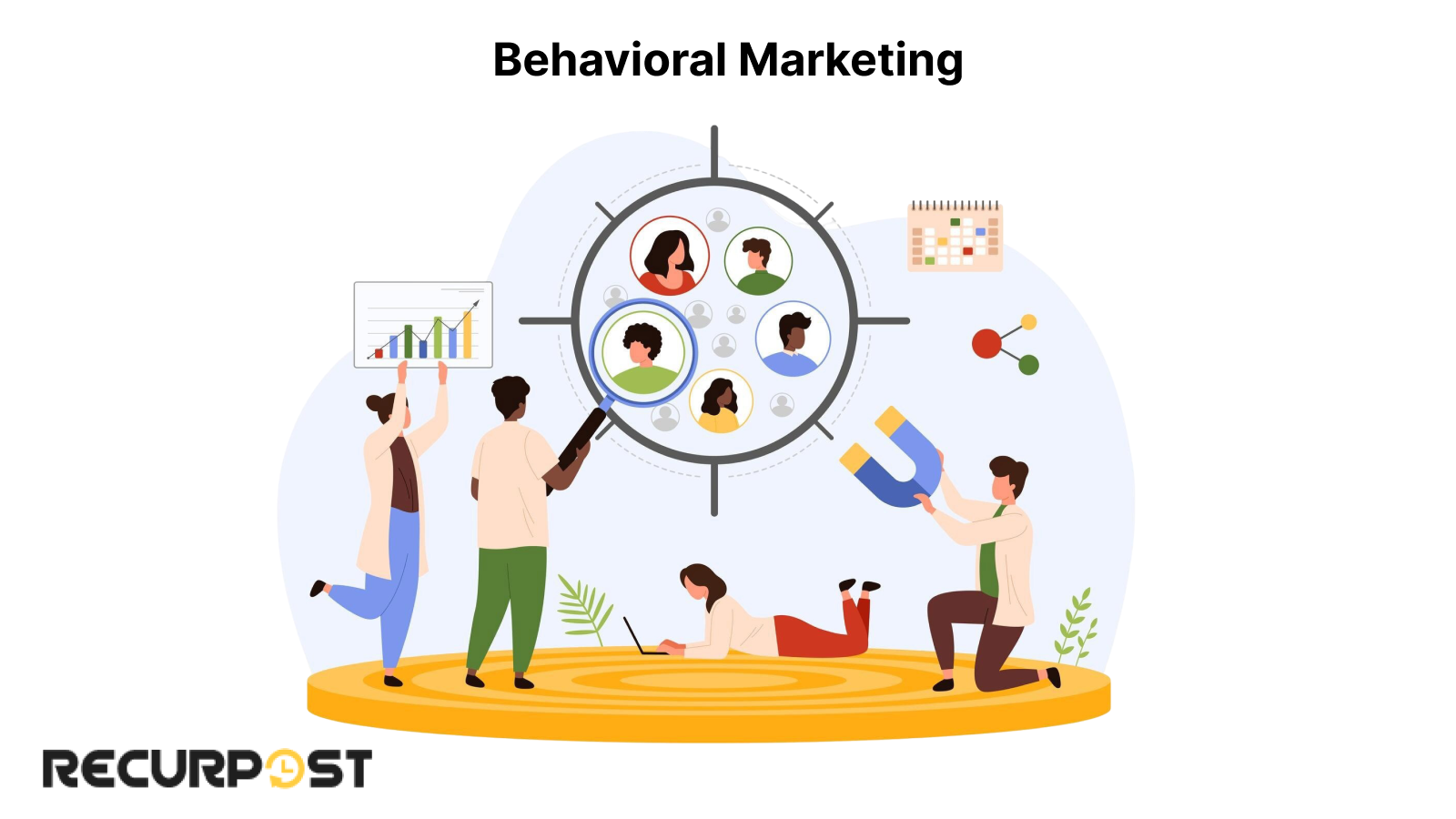
Behavioral Marketing targets customers based on behaviors rather than demographics. Companies collect user engagement data from websites, emails, apps, and ads, delivering personalized content matching interests and actions.
- Amazon: Uses behavioral data extensively to recommend products based on users’ past purchases and browsing history, which increases the likelihood of additional sales.
- Netflix: Suggests shows and movies to users based on their viewing patterns, ratings, and previous interactions on the platform.
- Spotify: Creates personalized playlists like “Discover Weekly” based on the songs users listen to and like, improving user satisfaction and retention.
Modern Marketing Types: The Evolution of Marketing Strategies
Marketing has evolved with modern marketing types focusing on digital engagement, personalization, and data-driven approaches. Among the 14 types discussed, several represent modern marketing:
- Digital Marketing: The backbone of modern marketing, encompassing social media, search engines, and mobile platforms.
- Content Marketing: Modern content marketing goes beyond basic blogs to include interactive content, AR/VR experiences, and multimedia storytelling.
- Influencer Marketing: Leveraging social proof through partnerships with individuals who have established credibility with target audiences.
- Conversational Marketing: Using AI-powered chatbots and messaging apps to create personalized, real-time customer interactions.
- Behavioral Marketing: Utilizing data analytics to deliver highly personalized experiences based on user actions and preferences.
These modern marketing approaches share common characteristics: data-driven, customer-centric, and focused on building relationships rather than promoting products. Modern marketing proves more measurable, allowing marketers to track metrics and optimize campaigns in real-time.
Choosing The Right Marketing Channel
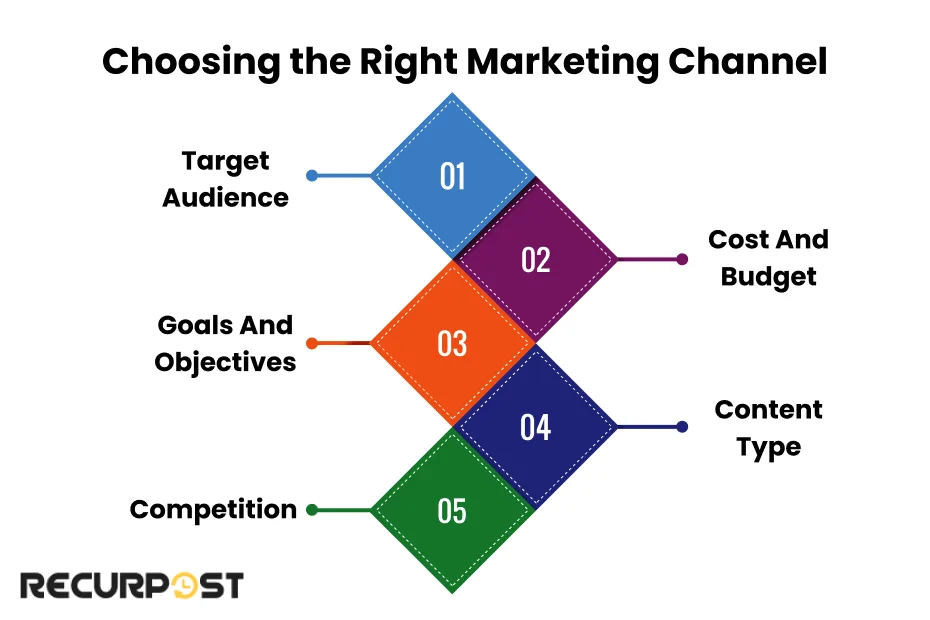
Choosing the right marketing channel involves understanding key factors, ensuring your efforts align with business goals. Here’s how you decide:
1. Target Audience
Start by identifying who your audience is and where they spend their time. If your target audience is young adults, platforms like Instagram or TikTok are good options. If you’re targeting professionals or educators, LinkedIn might be more suitable. Knowing where your audience is will help you choose the best platform to reach them.
2. Cost and Budget
Some marketing channels are more expensive than others. Paid ads on Facebook or Google might require a higher budget, while organic content on Instagram or LinkedIn could be more cost-effective if you have the time and resources to create quality content. Be sure to balance your goals with your budget.
3. Goals and Objectives
Different channels are better suited to different goals. If you want brand awareness, visual platforms like Instagram or YouTube can help you showcase your content. For lead generation or sales, Google Ads or email marketing might be more effective.
4. Content Type
Consider the type of content you’ll be creating. If you’re producing articles or blogs, LinkedIn or Medium might be the right place. If you’re making videos, YouTube or TikTok could work better. The channel should align with the format your audience prefers.
5. Competition
Check where your competitors are active. If they’re gaining traction on specific platforms, it might be worth investing there. However, if it’s too saturated, finding less crowded channels where your content can stand out may be smarter.
By considering these factors, you can choose the marketing channel that best fits your strategy and maximizes your return on investment.
Conclusion
Different marketing types help businesses grow in competitive markets. Each strategy, from traditional print to modern global marketing, reaches target audiences uniquely. While covering 14 types, many marketers focus on 7 main types (Traditional, Digital, Content, Inbound, Outbound, Brand, and Social Media Marketing) as the foundation. Depending on business needs, you might focus on 3-5 major types or incorporate 10-12 specialized approaches.
Marketing evolves continuously, requiring businesses to stay updated on trends and techniques. Embrace marketing types that resonate with your audience and refine approaches for maximum effectiveness.
Frequently Asked Questions
1. What are the 4 P’s in Marketing?
Product, price, place, and promotion are the Four Ps of marketing. These are collectively called the marketing mix. Neil Borden popularized the idea of the marketing mix and the concept of the Four Ps in the 1950s.
2. What are the other types of marketing?
Apart from the types of marketing discussed above, there are many more different types of marketing in traditional marketing and modern marketing- global marketing, acquisition marketing, door-to-door marketing, product marketing, and others are some of the different types of marketing.
3. Difference between blog marketing and blog post marketing?
Blog Marketing is about using the entire blog as a marketing tool for a brand or business. It is the overarching strategy involving the blog as a whole.
Blog Post Marketing targets the promotion of specific articles to boost traffic and engagement for individual posts. Blog post-marketing focuses on amplifying the reach and impact of individual pieces of content within that blog.
4. Difference between email and direct mail marketing?
Email Marketing is faster and cheaper, and it allows for more dynamic and personalized marketing messages. The major shortcoming of emails is that they can be easily ignored or moved to spam.
Direct Mail Marketing- is slower and costlier compared to emails, it can be personalized, and it includes physical letters and postcards.
5. Difference between email and cold email marketing?
Email Marketing targets audiences who have subscribed, is built on continuing relationships, and is more informative.
Cold Email Marketing targets a new segment of the audience who have not subscribed, aims to build new relations, and is focused on getting responses.
6. What are the 7 types of marketing strategies with examples?
The 7 main types of marketing strategies are:
Traditional Marketing: Billboard advertisements for Coca-Cola or TV commercials for insurance companies.
Digital Marketing: Google Ads campaigns for e-commerce stores or email newsletters from SaaS companies.
Content Marketing: HubSpot’s educational blog posts or Red Bull’s extreme sports videos.
Inbound Marketing: Shopify’s free business tools or Canva’s design templates that attract users to their platforms.
Outbound Marketing: Cold calling campaigns by B2B software companies or direct mail catalogs from retailers.
Brand Marketing: Nike’s emotional storytelling campaigns or Apple’s minimalist product launches.
Social Media Marketing: Wendy’s humorous Twitter presence or GoPro’s user-generated Instagram content.

Shubham Agrawal is a passionate content writer, with over a year of experience in this field. He excels in creating content in informative and creative way that aligns with readers. He juggle with words to create an engaging content.
